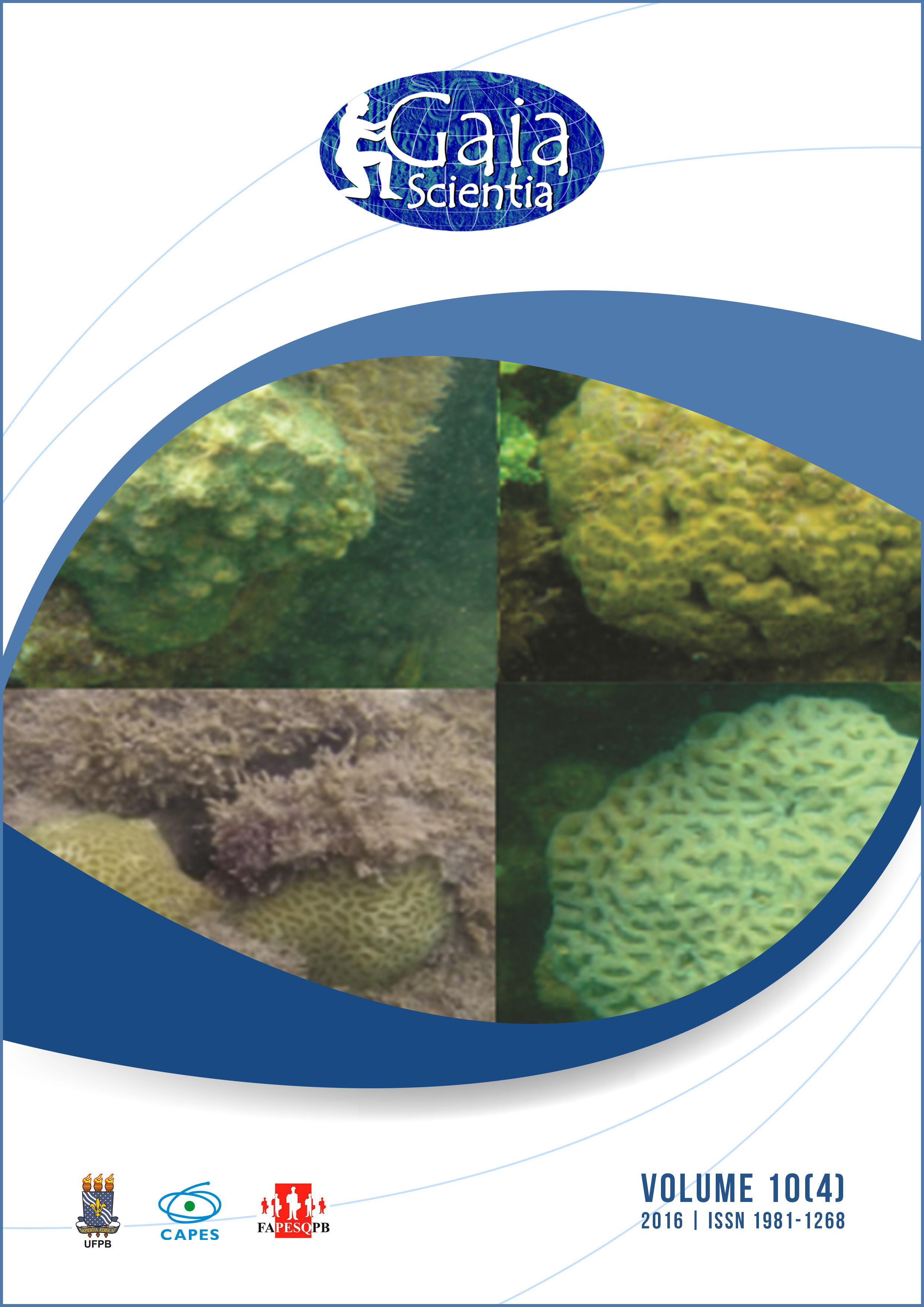COMPARATIVE ANALYSIS OF VOCALIZATIONS OF GUANS (GALLIFORMES, CRACIDAE, PENELOPE) FROM BRAZIL (SOUTH AMERICA)
Palavras-chave:
Acoustic interference, Apomorphies, Competition, Conservation status, CracidsResumo
The genus Penelope is a group of guans of the family Cracidae, Order Galliformes, which is quite characteristic in Brazil, totaling seven species (Penelope jacquacu, P. jacucaca, P. marail, P. pileata, P. obscura, P. ochrogaster and P. superciliaris). Each guan species has a particular distribution, with the exception of the Rusty-margined Guan (P. superciliaris) that is found in almost all the national territory. The objective of this study involves analyzing the songs of the species of Penelope in different regions of Brazil, and comparing them to those of the generalist species P. superciliaris to know if their singing patterns are modified when overlapping with other species of the genus, thus avoiding competition by acoustic interference. This comparative analysis involving several guan species is the first performed in cracids in the world, thus being highly relevant for future studies. Furthermore, we are providing the diagnostic characteristics, conservation status and ecological data of each species of the genus Penelope reported from Brazil.Downloads
Referências
Amézquita A, Flechas SV, Lima AP, Gasser H, Hödl W. 2011. Acoustic interference and recognition space within a complex assemblage of dendrobatid frogs. Proceedings of the National Academy of Sciences of the United States of America, 108(41): 17058–17063.
Audacity. 2015. Available at: < http://web.audacityteam.org/>. Accessed: Aug 2, 2015.
BirdLife International. 2015. Available at <http://www.birdlife.org/datazone/sowbsearchresults.php?a=ns&SearchTerms=penelope>. Accessed: Aug 7, 2015.
Brooks DM. 2006. Conserving Cracids: the most threatened family of birds in the Americas, n. 6. Houston: Miscellaneous Publications of the Houston Museum of Natural Science, 170 p.
Cody ML, Brown JH. 1969. Song asynchrony in neighbouring bird species. Nature, 222(5195): 778–780.
Del Hoyo J. 1994. Guans, Chachalacas, Curassows (Cracidae). In: Del Hoyo J et al. (Eds), 2014, Handbook of the Birds of the World Alive, Barcelona: Lynx Edicions. Available at: <http://www.hbw.com/node/52217>. Accessed: Sep 3, 2015.
Ficken RW, Ficken MS, Hailman JP. 1974. Temporal pattern shifts to avoid acoustic interference in singing birds. Science, 183(4126): 762–763.
Grantsau R. 2010. Guia completo para identificação das aves do Brasil, vol. 2, São Carlos: Vento Verde, 1249 p.
Gridi-Papp M. 2007. SoundRuler: Acoustic Analysis for Research and Teaching. Available at: <http://soundruler.sourceforge.net>. Accessed: Aug 3, 2015.
IUCN. 2015. International Union for Conservation of Nature. The IUCN Red List of Threatened Species. Version 2015.3. Available at: <http://www.iucnredlist.org>. Accessed: Aug 4, 2015.
Littlejohn MJ, Martin AA. 1969. Acoustic interaction between two species of leptodactylid frogs. Animal Behaviour, 17(4): 785–791.
Macaulay Library. 2015. The Cornell Lab of Ornithology. Cornell University. Available at: <http://macaulaylibrary.org>. Accessed: Aug 3, 2015.
Shepherd GJ. 2010. Fitopac. Departamento de Botânica, UNICAMP. Version 2.1.2.85. Available at: <http://pedroeisenlohr.webnode.com.br/fitopac/>. Accessed: Aug 2, 2015.
Sick H. 2001. Ornitologia brasileira, Rio de Janeiro: Nova Fronteira, 912 p.
Silveira LF, Straube FC. 2008. Aves ameaçadas de extinção no Brasil. In: Machado ABM et al. (Eds), Livro vermelho da fauna brasileira ameaçada de extinção, Brasília: Ministério do Meio Ambiente, p. 378–679.
Slabbekoorn H, De Kort S, Ten Cate C. 1999. Comparative analysis of perch-coo vocalizations in Streptopelia doves. The Auk, 116(3): 737–748.
Sibley CG, Monroe BL. 1990. Distribution and taxonomy of birds of the world, New Haven: Yale University Press, 1111 p.
Stotz DF, Fitzpatrick JW, Parker TA, Moskovits DK. 1996. Neotropical birds: ecology and conservation, Chicago: University of Chicago Press, 502 p.
Vielliard JME. 1993. A Zoophonia de Hercule Florence, Cuiabá: Editora da Universidade Federal de Mato Grosso, 47 p.
WikiAves. 2015. Available at: <http://www.wikiaves.com/penelope>. Accessed: Aug 2, 2015.
Winkler H, Short LL. 1978. A comparative analysis of acoustical signals in pied woodpeckers (Aves, Picoides). Bulletin of the American Museum of Natural History, 160(1): 1–110.
Xeno-canto Foundation. 2015. Available at: <http://www.xeno-canto.org>. Accessed: Aug 7, 2015.










